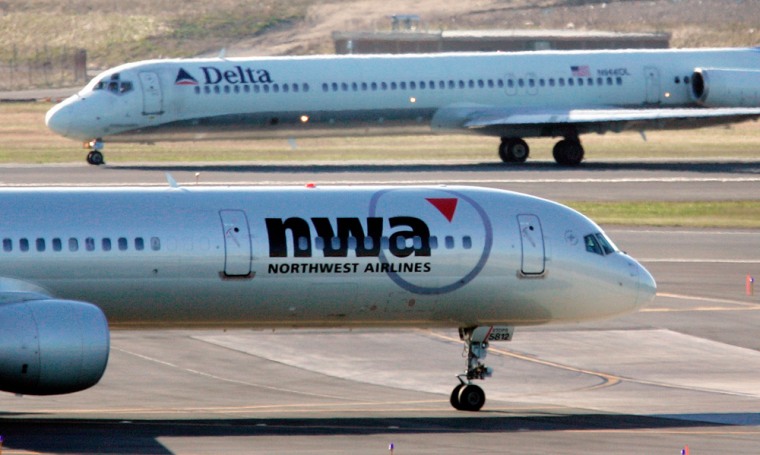In the three decades since the airline industry was deregulated, the flying public has received a free ride, or at least close to it. Thanks to debilitating price wars among airlines seeking an edge over competitors, U.S. airfares have plunged more than 50 percent in real terms since 1978 — giving rise to $49 flights and turning a form of travel that once was the province of the wealthy into the great proletariat pastime.
But when the CEOs of Delta Air Lines and Northwest Airlines sealed their merger accord with a handshake on April 15, the moment probably marked the end of the era of cheap travel. In this new age, major airlines could achieve the critical mass needed to raise fares enough to start recouping some of the $29 billion in losses they've suffered since 2001.
Delta Chief Executive Richard Anderson vowed to make only minimal cuts to the workforces, fleets and route structures of the two carriers. But most airline experts saw the promise as no more than a sop to the politicians, unions, and other constituencies who may try to torpedo the merger. That's because the Delta-Northwest deal is almost certain to trigger a wave of similar marriages, giving the resulting new megacarriers the pricing power to put their books permanently in the black. The Delta merger “is the drumroll for a new era, and I think you're going to see fewer routes, fuller planes — and higher fares,” says Robert W. Mann, an airline consultant in Port Washington, N.Y.
The path to profit
Anderson assured analysts he can produce $1 billion in revenue gains and cost savings just by synchronizing the Delta and Northwest fleets and route structures. But industry watchers believe that won't be enough for the combined airline, to be known as Delta, to turn a profit. If oil remains at about $111 a barrel, Vaughn Cordle, a 777 pilot who runs researcher AirlineForecasts, estimates the 12 largest U.S. carriers will lose $9 billion this year. The loss would deplete nearly 40 percent of the carriers’ cash and could push even strong operators such as American Airlines to consider bankruptcy. But Chapter 11, long the industry's preferred means to shed debt and revamp operations, may not be the safe haven it once was.
The recent liquidations of three smaller carriers that filed for bankruptcy — ATA Airlines, Skybus, and Aloha Airlines — suggest that the days when investors willingly gave sick airlines fresh capital to start over are past. “I think investors are concluding that just using cheap fares to fill seats is not a business model,” says aviation consultant Stuart A. Klaskin.
Indeed, with Air France-KLM backing out of its earlier plan to invest $750 million in the merged Delta-Northwest, Delta executives may have to turn to Wall Street to raise the $1 billion or more they'll need to cover the cost of integrating. If so, it's a good bet that investors there will demand Delta undertake a restructuring deep enough to turn a profit in an era of $100-a-barrel oil.
Prepare for fare hikes
Unfortunately for fliers, that would mean reducing the excess capacity that contributed to the industry's fare wars. Even before the merger, Delta had announced plans to shift 10 percent of its U.S. capacity overseas. But Gabor Kovacs, a former Federal Aviation Administration economist who is now an airline consultant for Morten Beyer & Agnew, says that for the six largest traditional airlines to cover their cost of capital, they'll need to cut their fleets by 19 percent and raise fares by 22 percent. That would boost the average cost of a round-trip ticket from $280 to roughly $340.
While the increase may seem small, Kovacs believes it would be enough to price the hoi polloi out of the market and reduce the number of passengers on U.S. carriers from 299 million to 240 million a year. But that may be the price the airlines — and their passengers — must pay for profitability.
